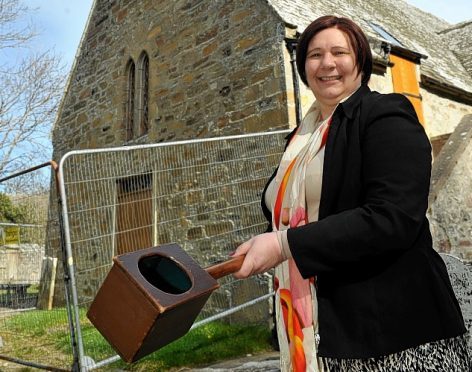The picturesque kirk on the outskirts of Cullen has some impressive connections to some of history’s most renowned Scots.
King Robert the Bruce pledged the venue an “eternal” bequest nearly 700 years ago – which is still being kept up.
The 14th-century royal decreed that the sum of five Scots pounds be given to what is now Cullen and Deskford church for the generosity the congregation showed after the death of his wife.
Elizabeth de Burgh died after falling from her horse while visiting the Auld Kirk in Cullen – which was a royal residence at the time – in 1327.
Preparations were made to take her body to the royals’ traditional burial ground at Dunfermline Abbey, but concerns were raised that her remains may not survive the journey intact.
Her internal organs were removed at Cullen and taken separately to Fife for the funeral.
Overwhelmed by the gesture from the congregation, Robert the Bruce bestowed money on the church so that she could be remembered every year on the Moray coast.
The king promised that the sum would be “for all eternity”.
The original endowment was augmented by Mary Queen of Scots in 1543, who provided 33 shillings and four pennies.
The bequest has been paid by different bodies through the centuries, and today the church receives £2.10 from Moray Council every year.
Robert the Bruce is not the kirk’s only link to famous figures from Scotland’s past.
Days before the battle of Culloden in 1745, Bonnie Prince Charlie was refused entry to the parish due to the Seafield family being Hanoverian sympathisers.
When the duke of Cumberland arrived shortly after, he was welcomed with open arms.
Senior elder James Findlay is fascinated by the church’s rich history.
He said: “We have written correspondence between the bishops of Moray and Aberdeen dating back to the 14th century about whose jurisdiction we would fall under.”
